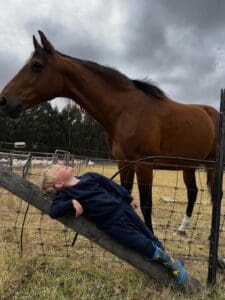Our Story
By Stewart Mactaggart - Managing Director
For those who knew my uncle, Darryl Hine, they would know he loved to tell a good story. So as Darryl’s nephew and now the Managing Director of Direct Seeding, I would like to share our company story with you – its foundation and its future.
Our story starts from humble beginnings on the family farm (affectionately known as Fheo) in the small town of Wellstead, on the south coast of Western Australia. Inception began in 1963 when my grandfather, Jack Hine became the first person in Australia to start no-till farming by importing Gramoxone to spray out weeds rather than tilling the paddocks. The no-till movement was later advanced and promoted by his sons (my uncles), Garry & Darryl Hine, who became pioneers for this farming style in Western Australia in the 1980’s.
Broadacre cropping, sheep grazing, a piggery and contract work were the main pursuits of the mixed operation on the family farm. Raising pigs was dropped from the farm’s program in 1990. In 1991, Darryl and wife Corinn Hine decided to expand their business ventures by dabbling in belting and pick up teeth for harvesters. Through these early belting imports, the business seed was planted for Direct Seeding and Harvesting Equipment. Since 1991, we have proudly had a strong partnership with W.C.C.O.
Darryl, known for his innovative and forward-thinking ideas, researched and located K-HART Industries in Saskatchewan, Canada who produced rugged, dependable double-disc seeding equipment. Excited by his discovery, he imported one (42ft) to try at Fheo. In its first season of 1993 the resulting germination and yields were good. Very good.
In 1994, my uncles and aunt, Garry and, Darryl & Corinn Hine, officially established the Direct Seeding and Harvesting Equipment business. After a peek over the fence, district neighbours were the first to get on board with the new imported equipment. The neighbour’s results were impressive too! Many of these valued clients have been with us for over 20 years, and we hold these ongoing client relationships in high regard.
The business operated out of the shearing shed on the original farm and grew steadily over the years. Contract work and later sheep grazing were dropped from the farm program as the demands of the business grew. In 2007 the decision was made to move the business into town, with a more suitable premises purchased. In 2008, the first shed was built at 978 ChesterPass road. This is where the business continues to grow and operate from.
Fast forward to 2017, Uncle Darryl and Aunt Corinn asked if I would like to take over the Direct Seeding business so they could ease into retirement. Through the transition, I spent three years working alongside my uncle, picking his brain, and learning his agribusiness craft. Sadly, Darryl was taken from us too soon in March 2020, and with the announcement of COVID19 soon after, I faced some of life’s biggest challenges, both personally and in business.
I am proud to be the third generation to carry on my family’s legacy as we embark on this exciting new chapter for the business. With my family by my side, my passion is to continue developing the perfect zero-till seeding system and strive to regenerate soil health for future generations to come.
Our History
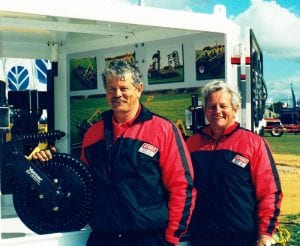
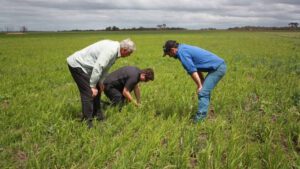

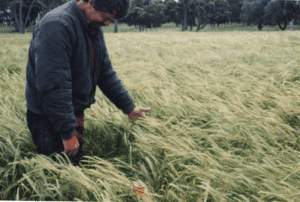
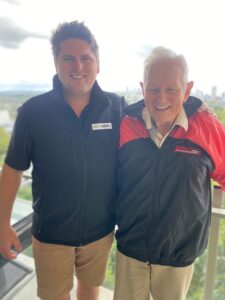

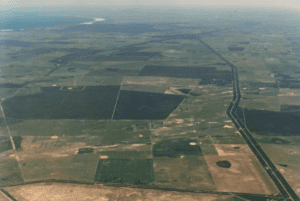
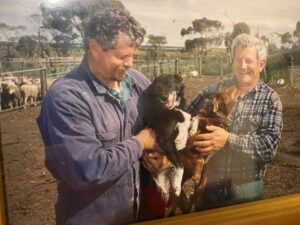


















Adoption of no-till in Australia is believed to began in the 1960s. Many believe Garry and Darryl Hine of Wellstead, Western Australia, to be Australia’s first no-tillers. The original family operation included 420 acres of owned ground and 300 acres of rented land, along with sheep and beef cattle. Western Australia has a Mediterranean climate that includes wet winters and extremely hot, dry summers. In 1963, he sprayed fields with paraquat (Gramoxone) and seeded perennial ryegrass for the first time. He decided to no-till because tillage encouraged the germination of annual ryegrass, which is considered a weed when it comes to pure seed production. It became an experiment to determine if sowing perennial ryegrass into pasture land would keep the annual ryegrass from germinating. It worked. Hine was able to eliminate the more expensive and time-consuming option of grazing those fields for up to 3 years to choke out the annual ryegrass.
An excerpt about the Hine family from “Ditching the Plough – A social history on how Western Australian farmers started a revolution in their paddocks that gave us modern farming” by Jo Fulwood (2021).
“An avid reader of Readers Digest, Jack Hine had been following the commentary over Plowman’s Folly, (in fact had ordered his own copy of the book) and had already developed an interest in reducing cultivation when he stumbled across an advertisement in this English magazine, not intended for the Australia market, describing a newly released chemical with an active ingredient called paraquat. The brand name of the chemical was Gromoxone®, owned by the chemical company Imperial Chemical Industries (ICI). The advertisement in this English magazine possibly would have been targeting the English horticulture industry, but grain grower Jack could see the potential opportunities for his certified seed business, even from half a world away. Since this wonder chemical was phytotoxic or poisonous to plants, it could therefore kill all plant material it touched, with no residue effect on a subsequent crop. The ramifications of this were not lost on Jack. He could see the huge opportunities for his business if he could kill all the weeds in the paddock before planting a crop. Not only would the subsequent crop be free of weeds, but he would be able to achieve a clean crop without cultivating the soil and waiting for a germination, all in one season. Jack sent a letter to ICI in the United Kingdom, enclosing a cheque, and a 60-litre drum of Gramoxone® arrived on his farm ready to be used for the 1963 cropping season. Jack and his sons used this drum of chemical to spray out the weeds on a paddock, replacing the need to cultivate the soil many times over. They planted their crop of Victorian perennial ryegrass, using a recently purchased Connor Shea disc (or sod) seeder to drill the seed into the paddock without the need for extensive cultivation across the paddock. Garry says the results from this very first crop were positive, with the main visual response being the massive difference in crop establishment. “We would have had three or four times as much seed germinate as what we would have if we’d ploughed and seeded it.” (Garry Hine, personal communication, 26 February 2021). Following this large germination increase, yield results also increased. It was a win-win situation and the Hines had made the first move in what was to become one of the most significant systems changes in Australia agricultural history.“
Early Adoption of No-Till in Australia Helps Farmers Grow in Dry Conditions (no-tillfarmer.com)
No-Till in Australia Helping Farmers Grow in Dry Conditions – Orchard Tech
Strengthening the future of Australia’s no-till movement (manmonthly.com.au)
https://www.no-till.io/resources/wantfa-issues/1996_Sep_WANTFA.pdf

